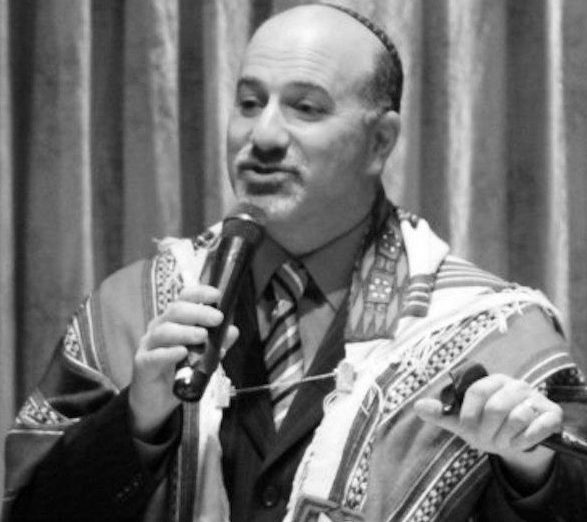
Two weeks ago, my friend — a pillar of our community, a father, a husband, and a true mensch — who was successfully fighting cancer, fell sick with the coronavirus. He died 24 hours later. Mourning his loss and comforting his family proved to be some of the most difficult moments of my 28-year career as a rabbi.
This happened at the beginning of the coronavirus outbreak in Los Angeles, when there was little protocol for how a cemetery or mortuary should deal with a COVID-19-related death, let alone how a rabbi should oversee the funeral and comfort the family and community.
We, the clergy and Mount Sinai Memorial Parks and Mortuaries, were in uncharted territory, determined to do all that we could to care for the family and to honor my friend’s memory.
Judaism teaches that saving a life overrides nearly every other Jewish law. We call this principle pikuach nefesh. Although the government and the Centers for Disease Control and Prevention had yet to come out and say, “Change your practices,” we believed that we had to protect everybody involved, from the family mourners and funeral attendees to the Mount Sinai staff, even if that meant altering traditional Jewish burial practices.
I spoke on the phone with the Mount Sinai staff. They were ready to make a plan to bury my friend with dignity. Taking part in what followed felt like the ultimate expression of pikuach nefesh. Together, we navigated an uncharted process, striking a balance between caring for the deceased and protecting mourners and staff. Having intimate knowledge of Mount Sinai’s dedication and commitment from tragedies in my own life, I knew that we were in the very best of hands.
In consultation with Rabbi Ronald Stern, whose insight brought clarity to the priorities, we made some important decisions about how to proceed. These decisions shaped the way that Mount Sinai conducted both my friend’s funeral and also the large number of COVID-19 related deaths that have followed, making Mount Sinai a leader in the worldwide effort to adapt important Jewish traditions to the realities of this pandemic.
With the family’s agreement, we decided that family members who had been in the deceased’s presence and thus at risk of infection, would not attend. This included his wife, children, parents and in-laws. They would bury their loved one remotely over FaceTime.
We also knew that our Cantor Doug Cotler, at 70 years old, would need to remain in self-isolation. We asked him to record an audio track of El Malei Rachamim to be played graveside. For siddurim, I emailed prayer sheets to extended family to print out ahead of time and we agreed that they would bring their own shovels, borrowed from neighbors and personally wiped down.
We made it clear to the few mourners that were able to attend we would maintain a strict policy of 6-10 feet of physical distancing. In a culture where caring is expressed through close presence and touch, this was far easier said than done, but for the good of my community and my family, I promised myself that I would be exceedingly strict about this.
We made it clear to the few mourners that were able to attend we would maintain a strict policy of 6-10 feet of physical distancing. In a culture where caring is expressed through close presence and touch, this was far easier said than done, but for the good of my community and my family, I promised myself that I would be exceedingly strict about this.
At the funeral, this proved harder than I expected. There were moments when my desire to bring solace had me almost letting down my guard. I was heartbroken on multiple levels and wanted to comfort the family as much as I myself needed comfort.
As rabbis, we are taught that the most important thing we can offer grieving families is our “precious presence.” By being there, by holding the family close and by grieving together with them, we truly help the family mourn their immeasurable loss. But now, all the ways I’m used to comforting families have been thrown out the window.
What is our precious presence if we can’t offer a hug or be physically present? How do we comfort a family when we can’t drive over to sit shivah or hold the hand of kids whom we have watched grow up?
How do we comfort a family when we can’t drive over to sit shivah or hold the hand of kids whom we have watched grow up?
We do it by changing long-held practices to preserve the essence. We appropriate new technology to let the community, the rabbis and the cantor show up for the family.
The family and I decided to hold a community memorial service over Zoom and oramiLIVE.com, with well over 400 people in attendance. Cantor Cotler, Rabbi Julia Weisz and I led the minyan, inviting six people to speak (for three minutes each). We interspersed their words with the traditional prayers and inspiring Jewish songs and together we said Kaddish and mourned as a community. It was a beautiful tribute to my friend. His family said it brought them unexpected comfort.
Jews have survived the unimaginable by imagining new ways and new rituals. Generation after generation, we have innovated in the face of seemingly insurmountable struggles and have always found a way forward. And as we did back then, so we will continue to do now.
Rabbi Paul Kipnes is the spiritual leader of Congregation Or Ami in the Conejo Valley.























 More news and opinions than at a Shabbat dinner, right in your inbox.
More news and opinions than at a Shabbat dinner, right in your inbox.